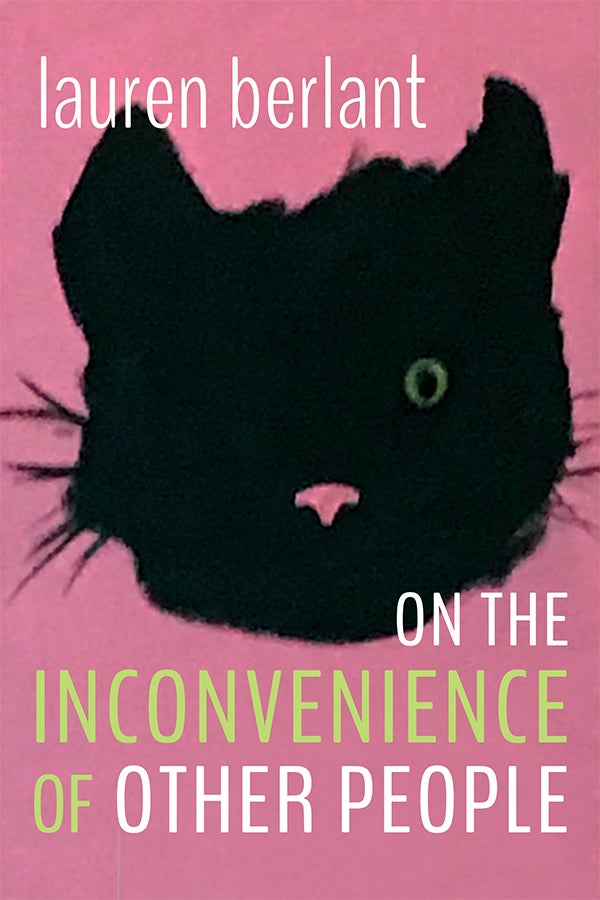Performing an autopsy on a bee
3 stars
Sorry Lauren. I want to like you and your writing, but I couldn't. On one hand, I think I can grasp the book’s key message, and see that it is compelling. On the other hand, my understanding feels entirely superficial, like I’m too stupid to read the book. This isn’t a nice feeling, obviously.
Let me lay out what I took away from it. Relationships with other, whether they are personal, sexual, communal or political, generate friction and inconvenience. The very act of relating to other – even if it's a relation based on hate, repulsion or subjugation – constrains our selves: it encroaches on our personal space and autonomy, and by doing so it challenges our illusion of sovereignty, of being independent subjects. And yet, we cannot help desiring relations. Acknowledging this situation (or affect) is helpful because it allows us to reframe the outcomes of relations. For example, …
Sorry Lauren. I want to like you and your writing, but I couldn't. On one hand, I think I can grasp the book’s key message, and see that it is compelling. On the other hand, my understanding feels entirely superficial, like I’m too stupid to read the book. This isn’t a nice feeling, obviously.
Let me lay out what I took away from it. Relationships with other, whether they are personal, sexual, communal or political, generate friction and inconvenience. The very act of relating to other – even if it's a relation based on hate, repulsion or subjugation – constrains our selves: it encroaches on our personal space and autonomy, and by doing so it challenges our illusion of sovereignty, of being independent subjects. And yet, we cannot help desiring relations. Acknowledging this situation (or affect) is helpful because it allows us to reframe the outcomes of relations. For example, if after a sexual encounter (one we agreed to) we feel disappointed or violated or regretful, it does not mean that we made the wrong choice. Rather, those feelings are part and parcel of relating to strangers in this way, which is a thing that 'we' want (we, in this case, stands for sex-positive feminists, I suppose). If attachment is “what draws you out into the world,” Berlant argues, “inconvenience is the adjustment from taking things in.”
So far, so good. I could just about make out these ideas from reading the introduction, and this reassuring book review by Jo Linvingstone. But on another level the book is so impenetrable that I couldn't really read it. The conceptual sections are abstruse to the point that, taken individually, the sentences make little sense, especially if one is not familiar with the hundreds of oblique references that Berlant scatters through the text: works of art, literary criticism, philosophy books, brought up without explanation. The chapters seek to use artwork to illustrate the point, and probably they would a bit easier if I had watched the films, seen the paintings or read the poems. Alas, I haven't.
I get defensive when people say that Haraway should write as she speaks, because I totally see the point of her style. It took me some time and effort, but now I really do. So I'm weary to move the same criticism against Berlant, since maybe it's me that is lacking. I can tell that it's intentional, they write as much in the introduction, where they forewarn the reader that they may feel frustrated by the insistence on the both/and of attachment'' and their 'parenthetical voice' that resists organising thought hierarchically. But does it work? For whom? I found it impossible. Jo Livingston puts it more classily, as being akin to 'performing an autopsy on a bee'.
I should maybe add a few words about the notion of infrastructure, which is one of the reasons why I wanted to read the book. For Berlant an infrastructural perspective 'looks at the extension of life from within lifeworlds rather than at the dominant causal mechanism for reproducing the world's time, spaces, hierarchies, and relations' (p. 20). So, where structures are the causal mechanisms (e.g. capitalism), infrastructures are their instantiations, 'concrete social relations', that however do not need to be material (in the sense of something that can be photographed or measured or touched), but include feelings. The benefit of this perspective (or 'heuristic'), is that it allows to redefine structure as 'something other than a kind of smoothness on top of volatility' (p 23). I don't know if I'm moving to far from the text if I say that focusing on infrastructure helps to see reality in the making, or as they put it to 'loosen the object-world's self relation while holding on to living, and in this sense it offers the pleasures of an attachment to life from an otherwise arduous space'. For once a genuinely clarifying example (p. 23): think of the difference between talking of the institution of marriage, vs the infrastructure of marriage. Especially at times of crisis (times where there exists a collective sense that a glitch is interrupting the reproduction of like), infrastructuralism emerges as an epistemology that highlights how 'nothing from above or the outside is holding the world together solidly' (p. 24), that things are fluid and could be easily be otherwise. Indeed, they go as far as to say that making this possibility for transformations visible is the main task of critical social thinkers, more useful than proposing better forms and objects with which to replace the ones we have. How this exactly relates to the points above I'm not sure, but I suppose it's helpful.

